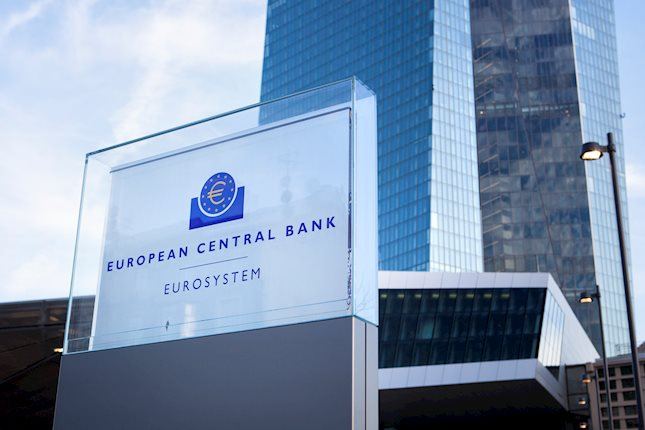- WTI depreciates due to deflation worries in China.
- Oil prices struggle due to uncertainty surrounding China's economic stimulus plans.
- The US expanded sanctions on Iran's petroleum and petrochemical sectors in response to an Iranian attack on Israel.
West Texas Intermediate (WTI) Oil price extends its losses for the second successive session, trading around $74.10 per barrel during the Asian hours on Monday. WTI price has depreciated by more than 1% following the lower-than-expected September Consumer Price Index (CPI) data from China released on Sunday.
The National Bureau of Statistics of China reported that the country's monthly Consumer Price Index (CPI) remained unchanged at 0% in September, down from August's 0.4% increase. The annual inflation rate rose by 0.4%, falling short of the anticipated 0.6%. Additionally, the Producer Price Index (PPI) decreased by 2.8% year-on-year, a larger drop than the previous decline of 1.8% and exceeding expectations of a 2.5% decrease.
Crude oil prices also face downward pressure due to uncertainty surrounding economic stimulus plans in China, raising fears about demand in the world's largest Oil importing country. However, following a briefing from China's Ministry of Finance (MoF) on Saturday, the National People’s Congress expressed optimism. The ministry announced plans to issue special bonds aimed at supporting bank recapitalization and stabilizing the real estate sector, although no specific figures were provided.
The downside of the Oil prices could be limited following the escalating tensions in the Middle East. The United States (US) expanded sanctions against Iran's petroleum and petrochemical sectors on Friday in response to an Iranian missile attack on Israel, per Reuters.
On Sunday, Hezbollah claimed responsibility for the drone attack in north-central Israel, which killed at least four Israeli soldiers, and over 60 people were injured, according to CNN. The number of injuries makes the attack one of the bloodiest on Israel since the war started last October.
WTI Oil FAQs
WTI Oil is a type of Crude Oil sold on international markets. The WTI stands for West Texas Intermediate, one of three major types including Brent and Dubai Crude. WTI is also referred to as “light” and “sweet” because of its relatively low gravity and sulfur content respectively. It is considered a high quality Oil that is easily refined. It is sourced in the United States and distributed via the Cushing hub, which is considered “The Pipeline Crossroads of the World”. It is a benchmark for the Oil market and WTI price is frequently quoted in the media.
Like all assets, supply and demand are the key drivers of WTI Oil price. As such, global growth can be a driver of increased demand and vice versa for weak global growth. Political instability, wars, and sanctions can disrupt supply and impact prices. The decisions of OPEC, a group of major Oil-producing countries, is another key driver of price. The value of the US Dollar influences the price of WTI Crude Oil, since Oil is predominantly traded in US Dollars, thus a weaker US Dollar can make Oil more affordable and vice versa.
The weekly Oil inventory reports published by the American Petroleum Institute (API) and the Energy Information Agency (EIA) impact the price of WTI Oil. Changes in inventories reflect fluctuating supply and demand. If the data shows a drop in inventories it can indicate increased demand, pushing up Oil price. Higher inventories can reflect increased supply, pushing down prices. API’s report is published every Tuesday and EIA’s the day after. Their results are usually similar, falling within 1% of each other 75% of the time. The EIA data is considered more reliable, since it is a government agency.
OPEC (Organization of the Petroleum Exporting Countries) is a group of 12 Oil-producing nations who collectively decide production quotas for member countries at twice-yearly meetings. Their decisions often impact WTI Oil prices. When OPEC decides to lower quotas, it can tighten supply, pushing up Oil prices. When OPEC increases production, it has the opposite effect. OPEC+ refers to an expanded group that includes ten extra non-OPEC members, the most notable of which is Russia.
Information on these pages contains forward-looking statements that involve risks and uncertainties. Markets and instruments profiled on this page are for informational purposes only and should not in any way come across as a recommendation to buy or sell in these assets. You should do your own thorough research before making any investment decisions. FXStreet does not in any way guarantee that this information is free from mistakes, errors, or material misstatements. It also does not guarantee that this information is of a timely nature. Investing in Open Markets involves a great deal of risk, including the loss of all or a portion of your investment, as well as emotional distress. All risks, losses and costs associated with investing, including total loss of principal, are your responsibility. The views and opinions expressed in this article are those of the authors and do not necessarily reflect the official policy or position of FXStreet nor its advertisers. The author will not be held responsible for information that is found at the end of links posted on this page.
If not otherwise explicitly mentioned in the body of the article, at the time of writing, the author has no position in any stock mentioned in this article and no business relationship with any company mentioned. The author has not received compensation for writing this article, other than from FXStreet.
FXStreet and the author do not provide personalized recommendations. The author makes no representations as to the accuracy, completeness, or suitability of this information. FXStreet and the author will not be liable for any errors, omissions or any losses, injuries or damages arising from this information and its display or use. Errors and omissions excepted.
The author and FXStreet are not registered investment advisors and nothing in this article is intended to be investment advice.
Recommended content
Editors’ Picks

EUR/USD extends downside below 1.0950 amid stronger US Dollar
The EUR/USD pair extends the decline to near 1.0920 during the early Monday. The risk aversion amid the escalating geopolitical tensions in the Middle East and conflicts between China and Taiwan exert some selling pressure on the riskier currency like the Euro.

GBP/USD remains close to one-month low, seems vulnerable near mid-1.3000s
The GBP/USD pair struggles to capitalize on Friday's modest gains and attracts fresh sellers at the start of a new week. Spot prices trade around mid-1.3000s and remain close to a one-month low touched last Thursday amid a bullish US Dollar.

Gold sellers return amid China concerns and light trading
Gold price is back in the red early Monday after staging a solid comeback late last week. The US Dollar is building on its previous gains, benefiting from a negative shift in risk sentiment at the start of the week.

Week ahead: What are the financial markets watching this week
The European Central Bank is widely anticipated to reduce policy by 25bps amid softening CPI inflation data and weak growth metrics. Investors have fully priced in the cut, with another 25bp reduction expected at December’s meeting. A rate cut this week would follow rate reductions in June and September.

RBA widely expected to keep key interest rate unchanged amid persisting price pressures
The Reserve Bank of Australia is likely to continue bucking the trend adopted by major central banks of the dovish policy pivot, opting to maintain the policy for the seventh consecutive meeting on Tuesday.

Five best Forex brokers in 2024
VERIFIED Choosing the best Forex broker in 2024 requires careful consideration of certain essential factors. With the wide array of options available, it is crucial to find a broker that aligns with your trading style, experience level, and financial goals.